anne-christine liske
the space. positions and thoughts.
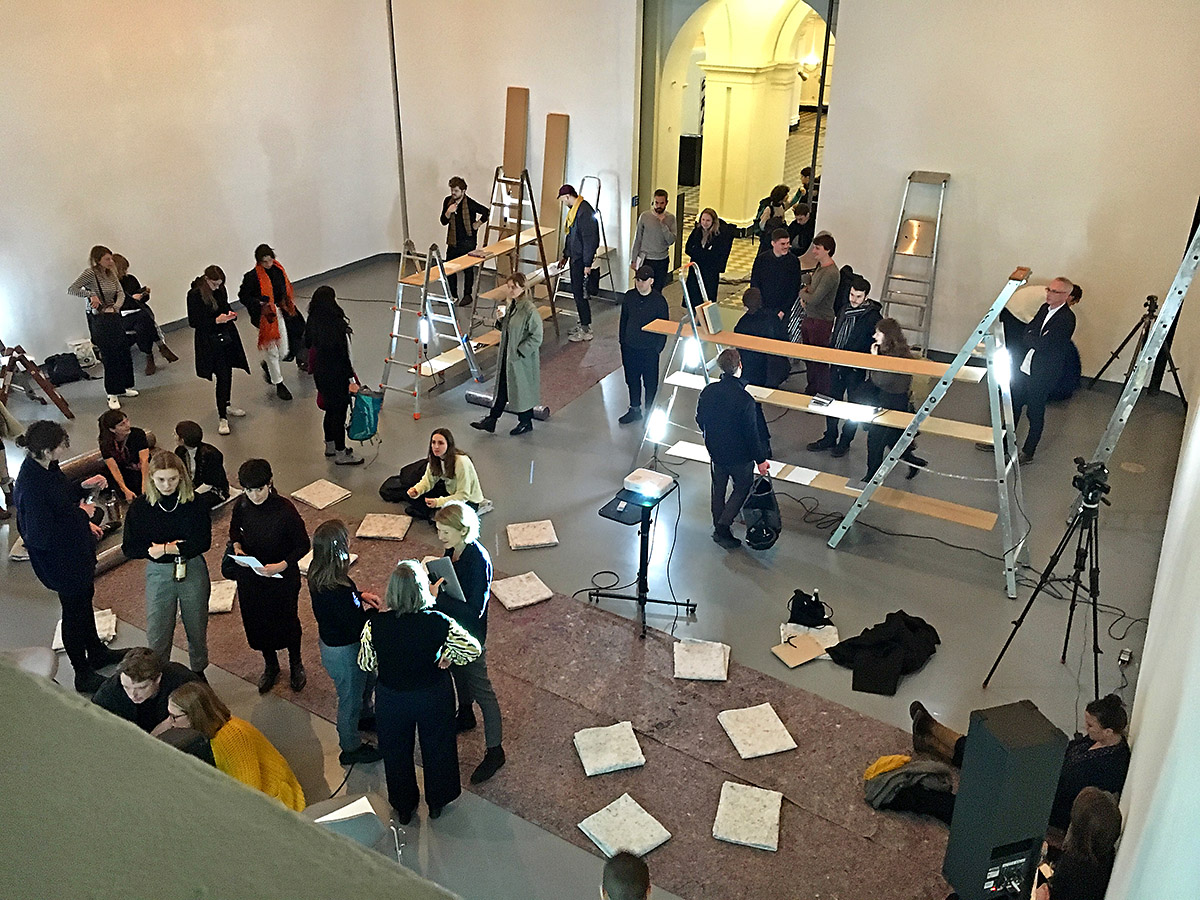
How did you feel in the space?
Such long sessions not only attack the mind, but also the body. So I think that these active breaks are important where one moves.
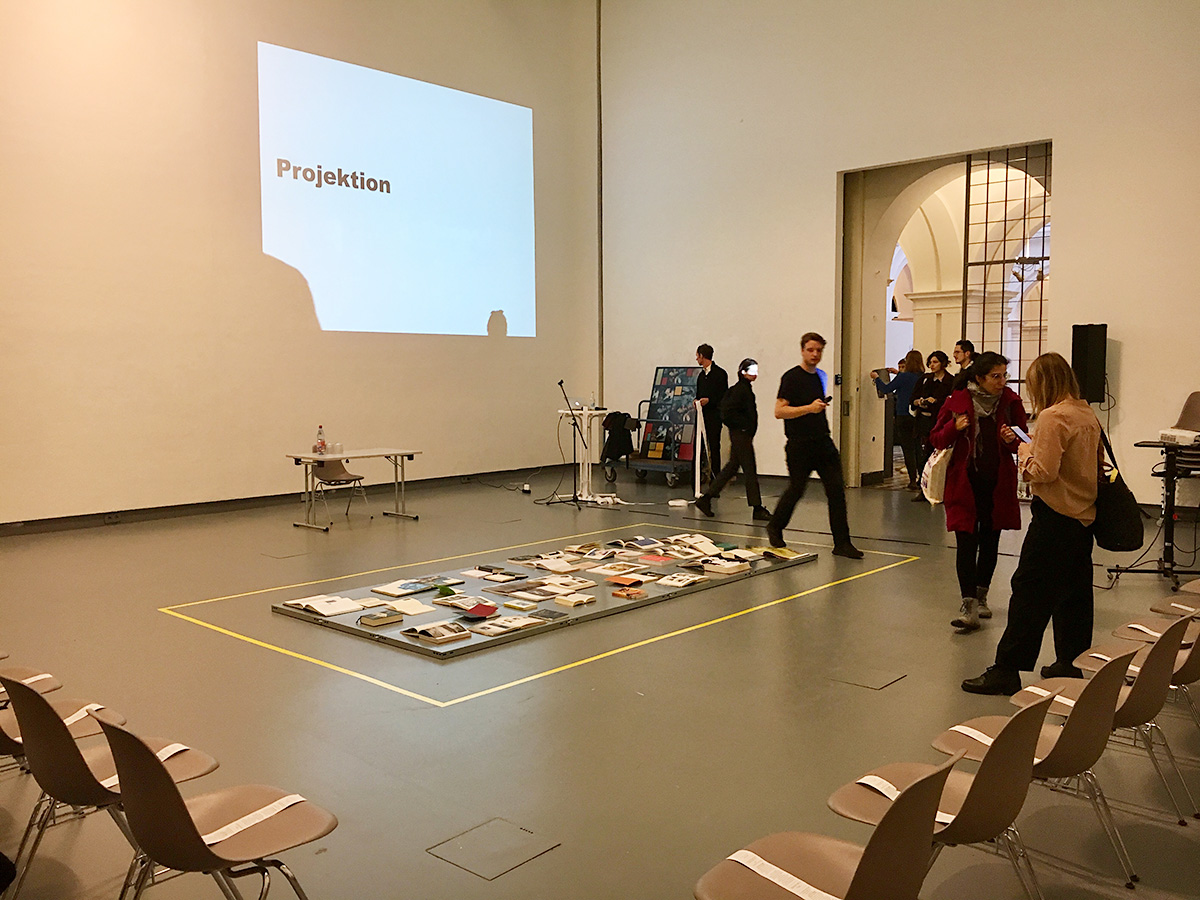
I always like sitting on the floor with lots of cushions and stuff.
You almost had the feeling as a participant that you should be as little noticeable or disturbing as possible.
Do you think that there is a connection between your own physical position and the reflection you might have?
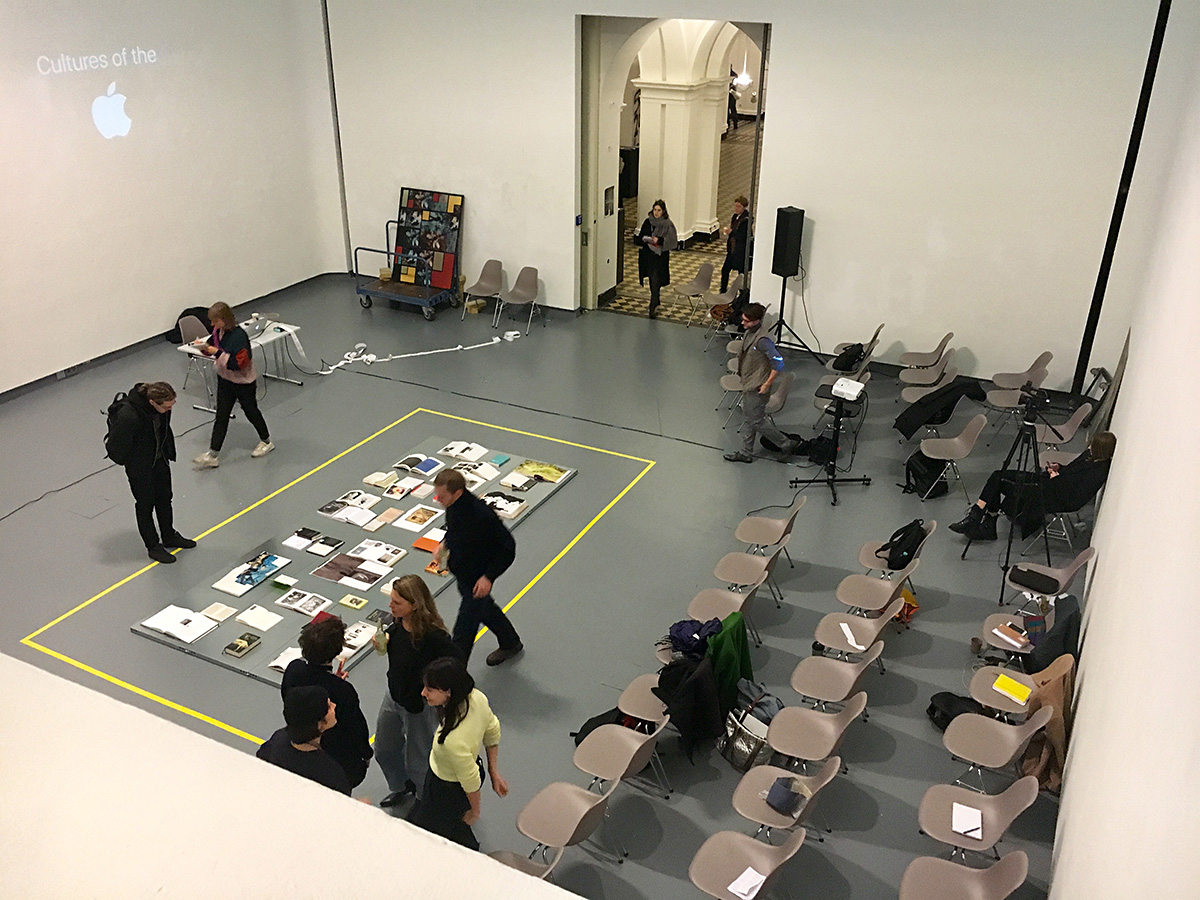
Nowadays the white cube plays the same role as the white book page for modern literature or the white canvas for modern painting. The empty white cube of space is the zero point of exhibition practice—and therefore the constant possibility of a new beginning.
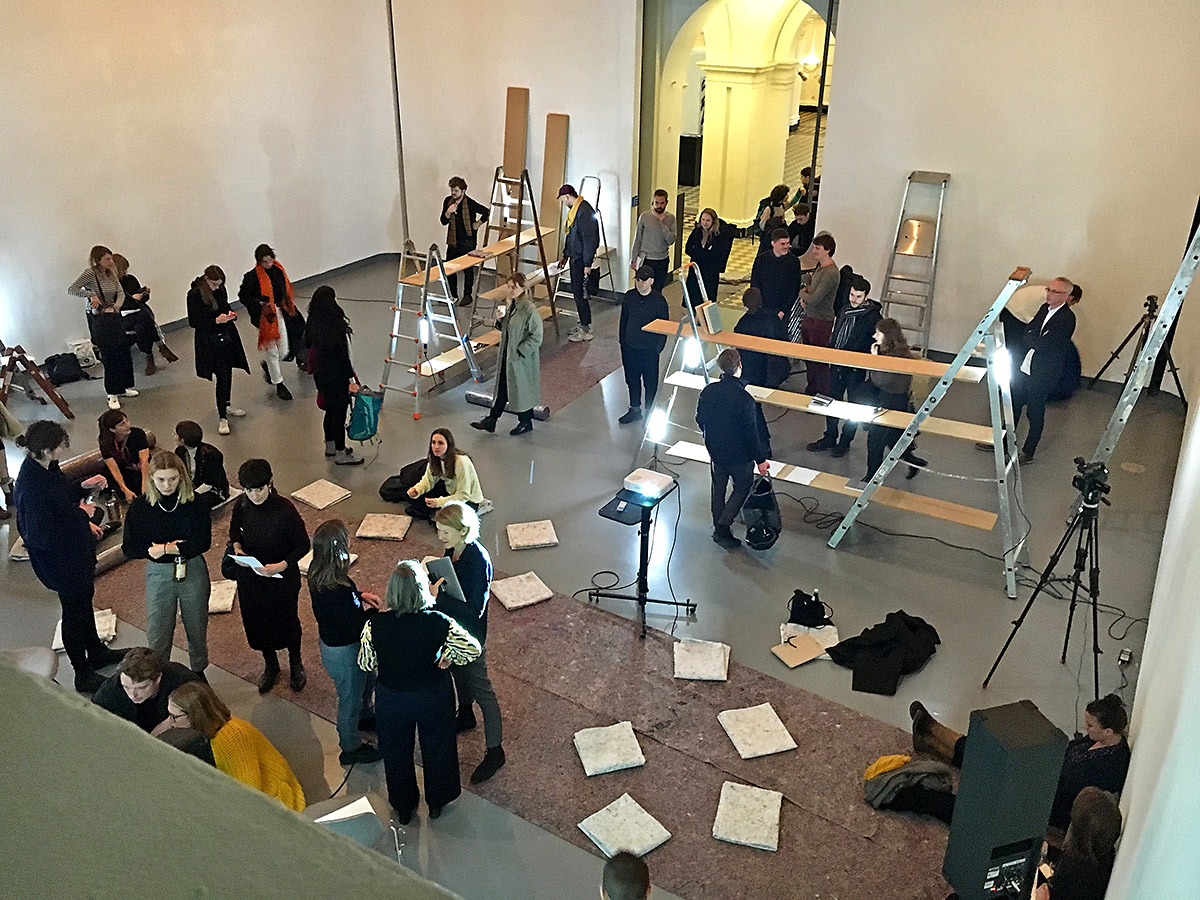
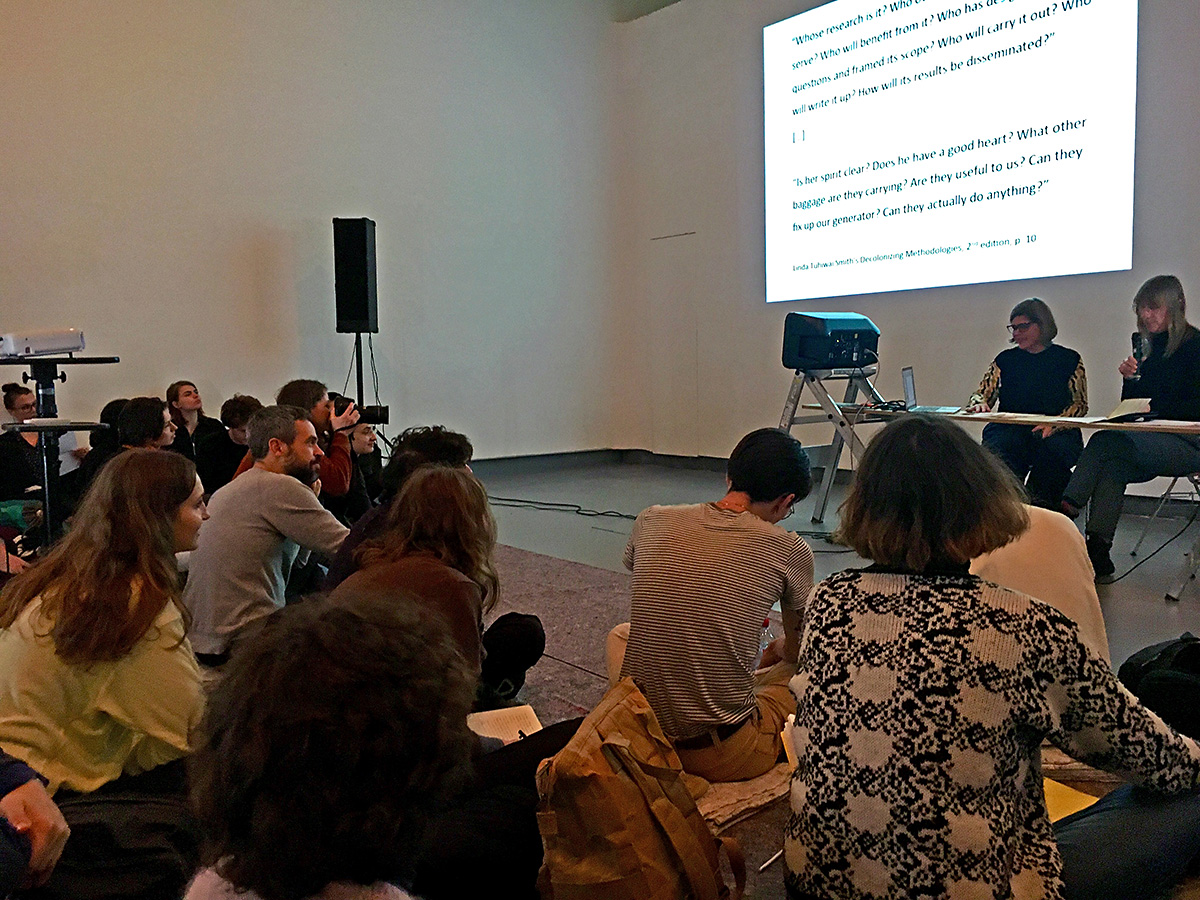
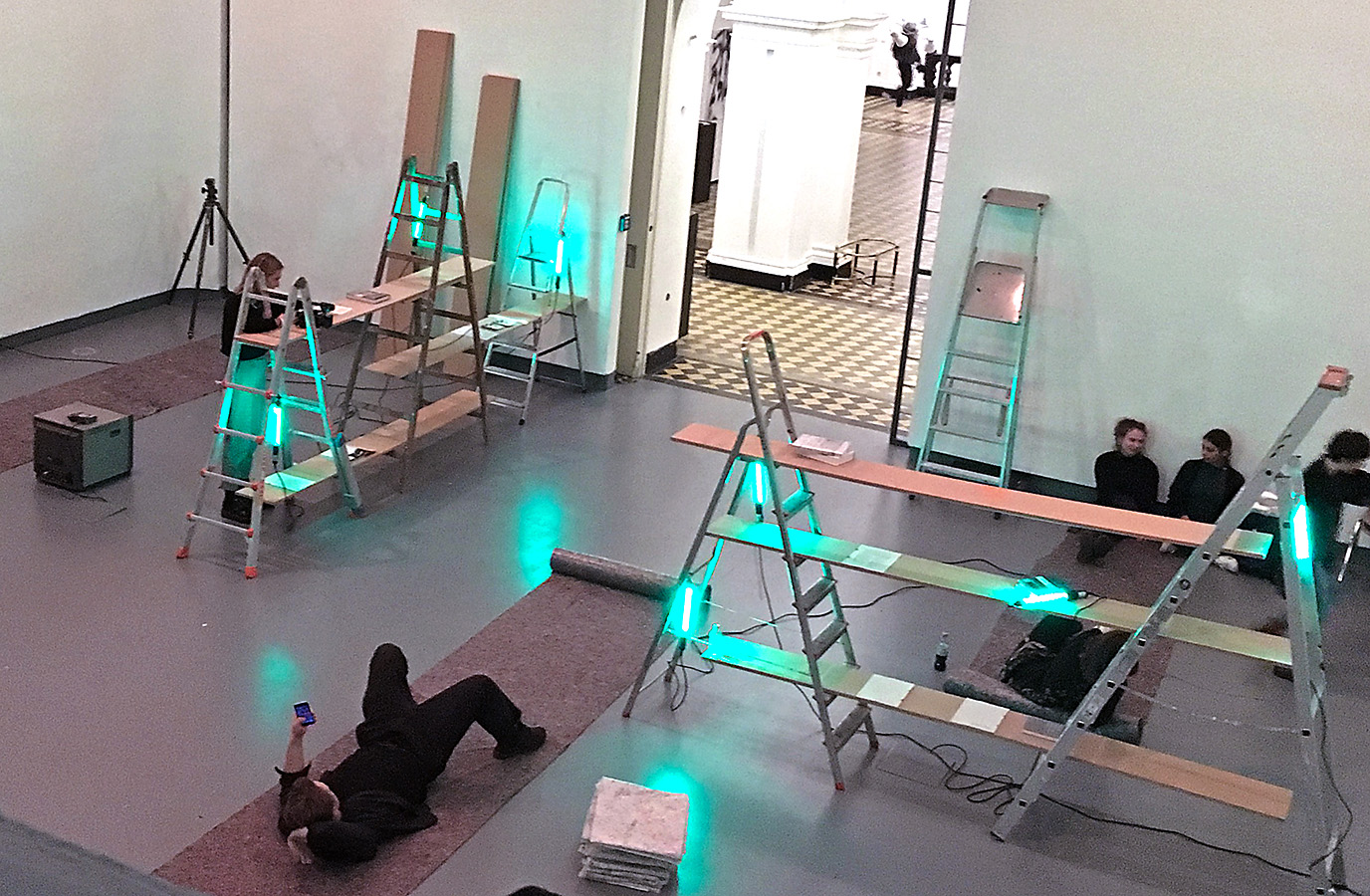
In fact, after a visit to a contemporary art exhibition, the only thing that truly remains in our memory is the organization of the spaces of that exhibition, especially if that organization is original and unusual.
The first thing one tries to do is to find out what the problem is, whether it's hierarchies or patriarchal systems that are still there. Point.
The next step would be to try to find out how to avoid that. That can also be very experimental, not only on paper, but spatial.
Spatial exclusion? Could obviously content exclusion be compensated through spatial inclusion?
Did you think about your own position and if it would have been better to stand or to have different chairs or to lay on the ground to be able to listen better to the events?
During the performance it might have been nice to be able to try out certain gymnastic exercises, figures by myself, even as an audience.
I would love to dare to sit on cushions or listen to an academic speech in sunbeds.
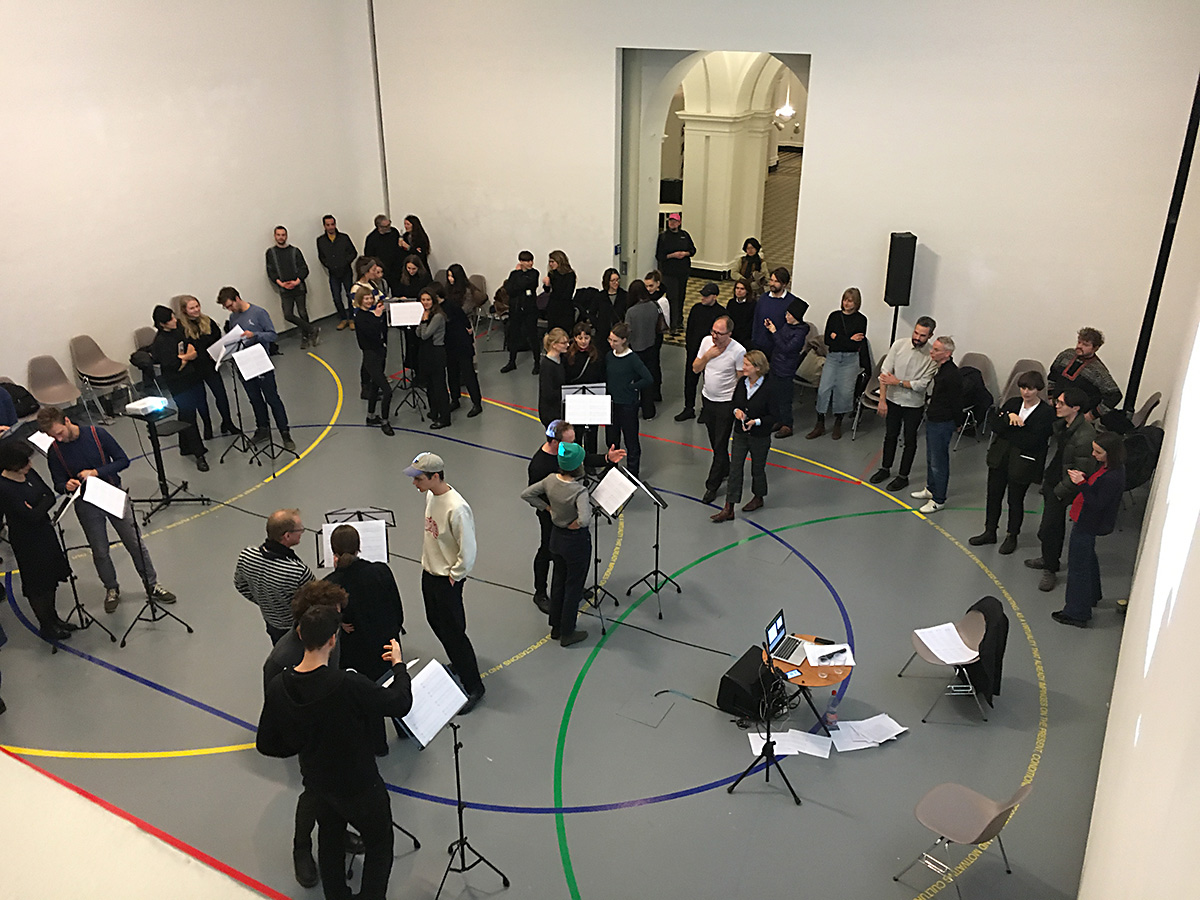
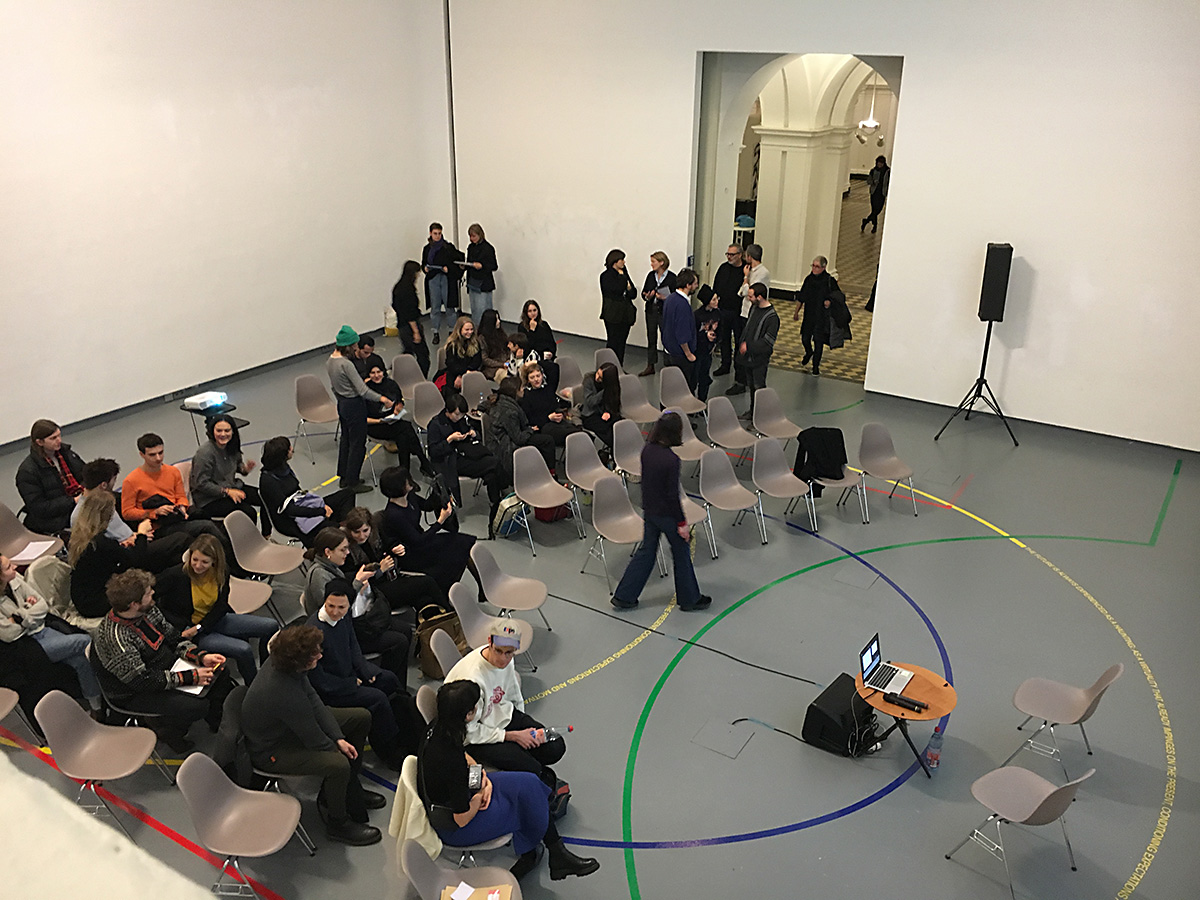

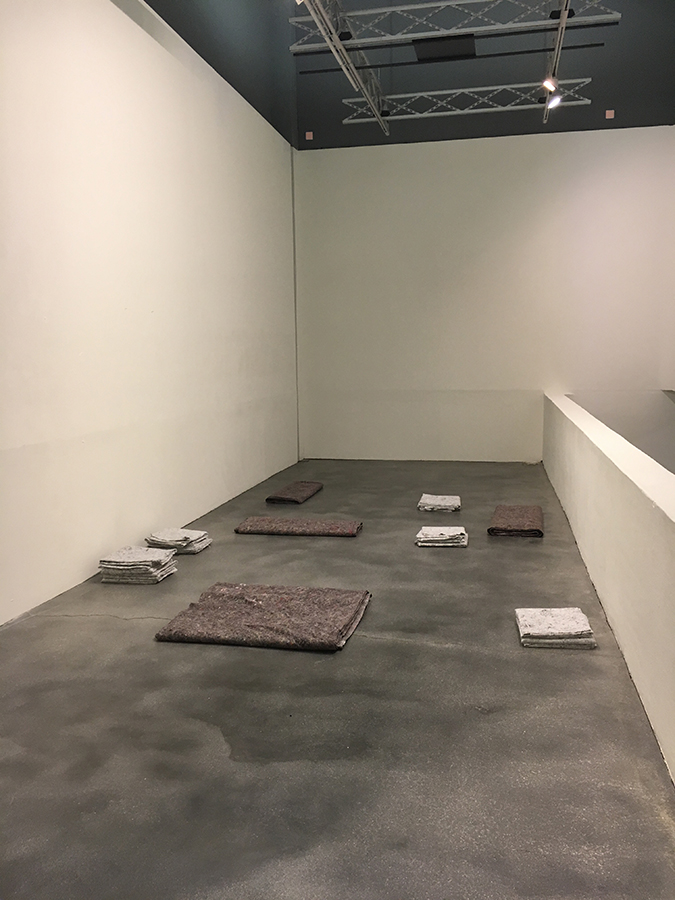
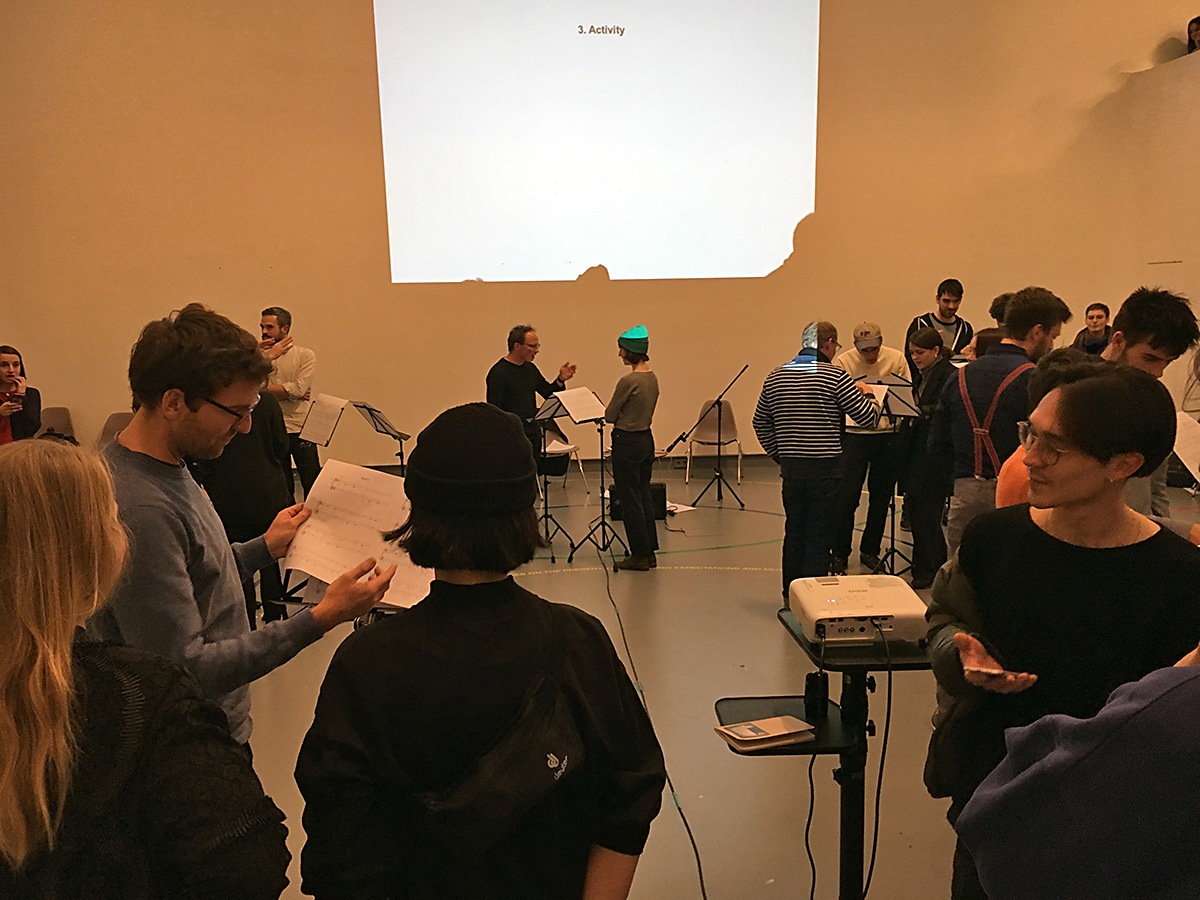
An exhibition is physical but, if done well, can be thought-provoking.
Do you think the space helped you or did not help you do engage with the content of the event?
The connection between the place, how you feel and what happens there. What makes that possible? Or in conclusion, what is prevented by different spaces?
How, through field perspective, multi-perspectivity, one could always find oneself in a different relationship to what just happened.
It was nice how we all read together on the ‘try-day’, how it came from different voices that also had different accents in English.
We are exhibited through the exhibition—for ourselves and for others.
This line between being invited or feeling forced stays very interesting.
You could just let the microphones go by, one could use it or not, but it would pass you by.
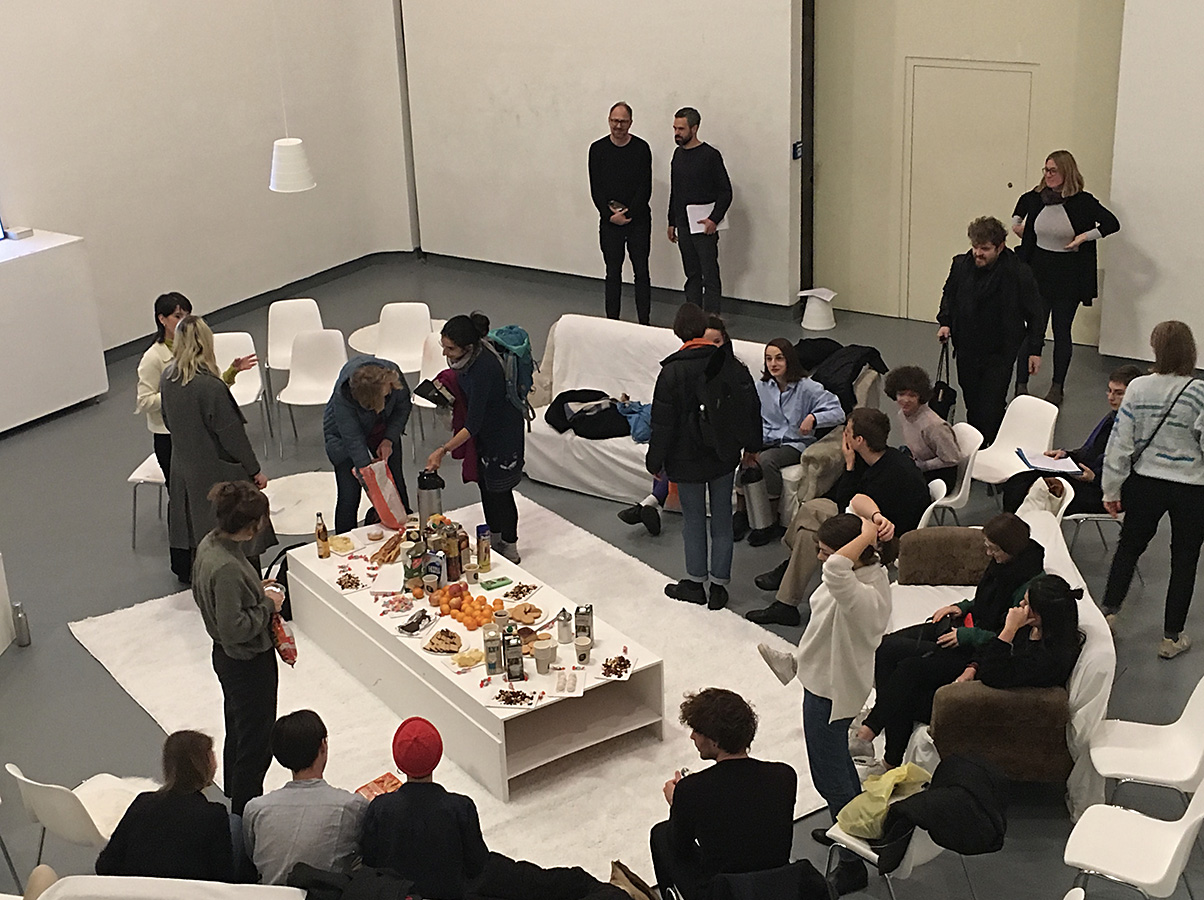

How did you feel in the space?
This idea of the living room, that everyone is looking for their own place in the same way, I would say was just a hint.
The work thus contributes to self-awareness and self-questioning of all participants.
The curatorial situation provides both the time and the space for encounter between entities unfamiliar with one another.
How could we find methods to make everyone more comfortable, it is very difficult, there is always the pressure from time and money.
I often had to think about how one could have created a true nonkrong-session and how a less hierarchical dialogue could have been developed.
It would have been nice if we all had sofas. This is just a different physical position and then you speak differently.
The second thing that is also connected with this is the ambivalence between productivity and unproductivity, which is already inherent in this invitation to waste time together. And how can something like this be transferred into a format that we still perhaps call exhibition?
Was there an encounter?